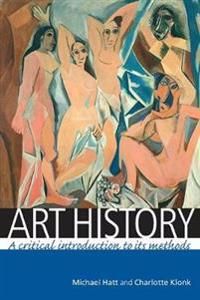

The Art of Describing
- Utgiven: 1984
- ISBN: 9780226015132
- Sidor: 302 st
- Förlag: University of Chicago Press
- Format: Häftad
- Språk: Engelska
Om boken
"The art historian after Erwin Panofsky and Ernst Gombrich is not only participating in an activity of great intellectual excitement; he is raising and exploring issues which lie very much at the centre of psychology, of the sciences and of history itself. Svetlana Alpers's study of 17th-century Dutch painting is a splendid example of this excitement and of the centrality of art history among current disciples. Professor Alpers puts forward a vividly argued thesis. There is, she says, a truly fundamental dichotomy between the art of the Italian Renaissance and that of the Dutch masters. . . . Italian art is the primary expression of a 'textual culture,' this is to say of a culture which seeks emblematic, allegorical or philosophical meanings in a serious painting. Alberti, Vasari and the many other theoreticians of the Italian Renaissance teach us to 'read' a painting, and to read it in depth so as to elicit and construe its several levels of signification. The world of Dutch art, by the contrast, arises from and enacts a truly 'visual culture.' It serves and energises a system of values in which meaning is not 'read' but 'seen,' in which new knowledge is visually recorded."—George Steiner, Sunday Times
"There is no doubt that thanks to Alpers's highly original book the study of the Dutch masters of the seventeenth century will be thoroughly reformed and rejuvenated. . . . She herself has the verve, the knowledge, and the sensitivity to make us see familiar sights in a new light."—E. H. Gombrich, New York Review of Books
Åtkomstkoder och digitalt tilläggsmaterial garanteras inte med begagnade böcker
Mer om The Art of Describing (1984)
I april 1984 släpptes boken The Art of Describing skriven av Svetlana Alpers. Den är skriven på engelska och består av 302 sidor. Förlaget bakom boken är University of Chicago Press.
Köp boken The Art of Describing på Studentapan och spara uppåt 25% jämfört med lägsta nypris hos bokhandeln.
Referera till The Art of Describing
Harvard
Alpers, S. (1984). The Art of Describing. University of Chicago Press.
Oxford
Alpers, Svetlana, The Art of Describing (University of Chicago Press, 1984).
APA
Alpers, S. (1984). The Art of Describing. University of Chicago Press.
Vancouver
Alpers S. The Art of Describing. University of Chicago Press; 1984.



















